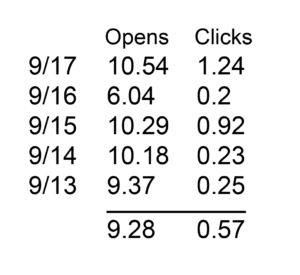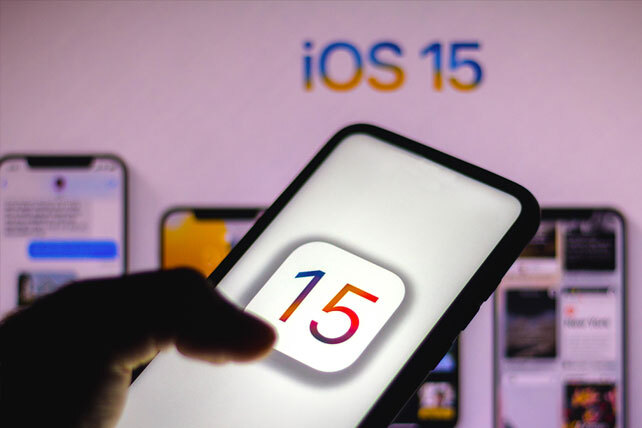In the run-up to each release of iOS 14, 14.5 and 15, Armageddon (of some sort) is always predicted, but reality rarely matches our deepest marketing fears.
It’s good to remember that even though every new Apple feature is significant, a large portion of the population does not own an Apple device. According to Statcounter, iOS is the top mobile operating system in the US with 57% market share. So 43% are unaffected. Approximately 20% of the 57% of users are using an older operating system released more than nine months ago.
57% x 20% = 45.6%
Our mobile traffic COULD be affected by Apple’s latest changes by roughly 46%. Among those, only those using Apple Mail will be impacted. Based on my research, Apple Mail has something like a 40% market share of the mail apps. Marrying those 2 stats is a bit problematic, but the main point is that if 57% of the US uses iOS but only 40% use the Mail App that’s markedly less than 46%. Let’s assume it’s about 30% less (between 40% and 57%) than the traffic related to iOS.
In other words, 45.6% x 30% = 31.92% of all our email could be affected by this latest change. Okay, it’s not trivial. But it’s also not like every email sent is affected.
To Review, the Key iOS 15 Changes Being Made Are:
- All images (and tracking pixels) will be preloaded BEFORE opening the Mail app, so that it loads faster. An “open” is triggered by Apple before a real open occurs. As a result, open rates will rise.
- Apple’s new privacy protection will prevent you from segmenting by geolocation by withholding IP addresses.
Let’s Review What Won’t Change Based on These Changes Before We Start With the Data:
- Clicks: Apple does not spoof a click on each link. Rather, they preload images containing tracking pixels.
- Onsite attribution: Once the click (and corresponding UTM) is triggered, your site’s Google Analytics account will accurately track any conversions.
Now that we’re about 1 month into iOS 15’s release, we took a look at a few of our emails to see if we could identify any trends. We compared a list which goes to a large (over 200k daily) audience, and the subject lines are set for each of our 365-day devotional emails. In other words the subject headlines are NEVER connected to news and outside influences.
Here are the open and click rates for the 5 days just before iOS 15 was released:

And here are the open rates for a recent 5-day stretch:

On average, the open rate increased 17% and the click rate increased a modest 5%. It is my opinion that the click rate is largely a function of randomness and is not necessarily statistically relevant.
What is important to note is the 17.3% growth in opens. Some or perhaps all of this increase could be attributed to the adoption of iOS 15 Mail apps.
So what?!
Here Are a Few Actionable Tactics for You:
- Recalibrate your expectations for open rates immediately. They are higher, and this is likely to increase as iOS 15 continues to be adopted. If 10% was good before, 12% might be good now. 14 % might be acceptable next month. As you evaluate your marketing efforts (including ours), keep this in mind.
- Those who A/B test based on subject lines should be aware that this may no longer be the best metric. We have long advocated a 10/10/80 (10% for version A, 10% for version B, 80% for the most opens after an hour) test approach for subject lines. This is no longer a best practice. While we test a variety of methods to determine the best practice for our clients, we suggest evaluating based on clicks — 10/10/80 or 20/20/60 with a 1 or 2 hour window for the test portion of the campaign.
Email geo-targeting on iOS does not affect our clients. Each Outreach Media Group email subscription is 100% opt-in (more valuable), and we collect location-based data on the sign-up form. All subscriptions are geo-tagged by country/state. We’re also using segments of iOS/non-iOS email subscribers to create relevant subject line tests.
As faith-based marketers, we strive to do and help others to do “smarter marketing.” May you be just 1% more effective today!
